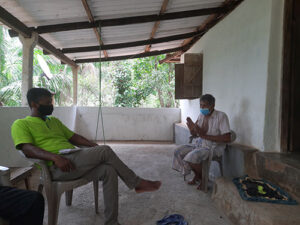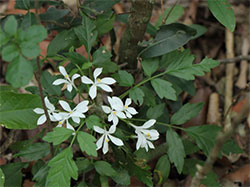Bim Kohomba (Munronia pinnata) is a herb that is used to purify blood and reduce fevers. If its foliage density were slightly greater, we are sure that Lord of the Rings fans may well have mistaken it for the fictitious, cure-all magical herb of Ethelas which has the same properties. It used to grow in great swaths across the Knuckles region. Well, once its properties became better known, a plant that used to go for Rs. 20 a kilo shot up to Rs. 500 a kilo and was harvested to extinction. It could have been protected and its harvests limited to the requirement of indigenous medical practitioners but no. Activists and practitioners alike kept its properties a secret citing, of all things – bio piracy. Well that was only a public secret with everyone attempting to get their hands on a few kilos for sale. The upshot? No one actually created any mechanism, protocol or laws to protect it and it was subject to “secret”, uncontrolled destruction. So, too, many other herbs that were once quite prevalent in the area for pretty much the same reason.
Those who could protect that biota and make it flourish are the practitioners. Not the protectionists ringing piracy alarm bells who can only shout but have no real capacity or strategy to do the needful and prevent the tragedy that ensued from their howls.
Saliyadasa Vedamahattaya of Halminiya told us this story and said that he had been given land by the Department of Ayurveda to grow his own herbarium. He asked us if we could get him the required plants but hold on. Is THAT what we should do? Sure, we could go the easy NGO route, determine that “Saliyadasa requires 10 bim kohomba plants”, go through purchasing, give it to him, take a photo, execute exit strategy and go gaily on our dumb way.
That is not our way. If we are to ensure that biodiversity is re-established and especially medical biodiversity, it would be through a system of widespread propagation and not one single herb garden. We can and we will obtain the required plants but we will also bind all of the practitioners of the area to the Department of Ayurveda and speak to them and the relevant ministry and regulators to tie all of these together in a strategic plan for improving the density and distribution of the plants similar to the process we employ for improving heirloom agro biodiversity. With Free Prior Informed Consent (FPIC) a key part of the CBD, that must be our strategic route.
Our field teams almost went the way of most to accede to the micro request with no thought to solving a macro problem. YIKES! Sanity prevailed since the HO was informed of the plans. We just about managed to dodge a classic NGO bullet.






